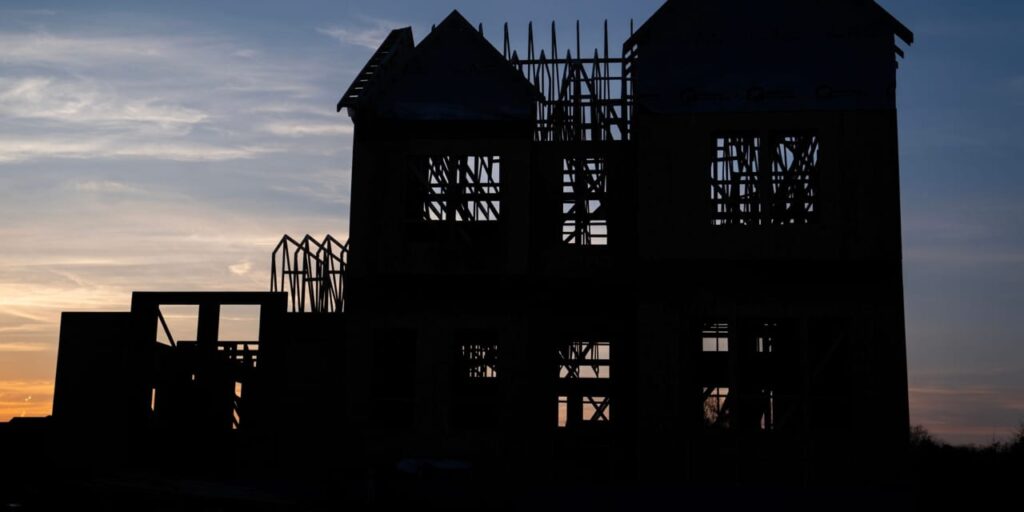U.S. housing is overvalued, according to Fitch Ratings, reflecting a scarcity of homes that points to continued good times for builders.
Nationally, home prices in the third quarter of 2023 were 11.1% overvalued, Fitch estimated on Friday, up from 9.4% in the second quarter. The credit-rating company estimated that prices in 91% of all U.S. metropolitan areas were overvalued, up from 88% in the second quarter of last year.
“The increase in Fitch’s overvaluation estimate was driven primarily by higher real home prices,” Fitch Ratings director Sean Park and associate director Iris Xie wrote.
Of the 50 largest metropolitan areas, prices were most overvalued in Memphis, Tenn.; Buffalo, New York; Milwaukee; and Indianapolis, they wrote. Home prices were deemed sustainable in six metropolitan areas: Cleveland, Denver, Los Angeles, Dallas, Miami, and Detroit.
While there are indicators of “a gradual thawing” in the housing market, “challenges such as high mortgage rates and elevated home prices that aggravate the affordability issue continue to moderate the pace of this process,” Park and Xie wrote.
High home prices, combined with rising mortgage rates, have made it harder for prospective buyers, particularly first-timers without cash, to land a house or apartment. Mortgage rates rose for the fourth straight week, to 6.94%, this past week. A relative lack of for-sale homes has helped keep home prices high and leading indicators of existing-home sales low.
That is a headache for buyers but not necessarily a bad thing for builders, whose shares climbed last year in part because of the need for more housing. While existing-home sales measured by the National Association of Realtors fell in 2023 to the lowest level in nearly 30 years, sales of newly built homes increased about 4% from the year prior. They continued to rise in January, gaining 1.5% from December.
“The current overall sales market indicates a keen interest in newly constructed homes, while the wider market continues to emerge gradually from a period of stagnation,” Park and Xie wrote in the report.
Builders say buyers are shopping. “We continue to see healthy demand in all of our markets and across buyer demographics, driven by lack of existing supply and a resilient economy,” Michael Forsum, the president and chief operating officer of California-based
Landsea Homes,
said on a Thursday conference call. “We definitely have seen an active resurgence in buyer demand coming into the new year.”
Two exchange-traded funds tracking home construction-related companies, the
SPDR S&P Homebuilders ETF
and the
iShares U.S. Home Construction ETF,
rose to new closing highs this week. Cabinet manufacturer MasterBrand and pool-maker Hayward were the best-performing stocks among holdings in the iShares ETF, rising 15% and 11% this week from the prior Friday’s close, according to Dow Jones Market Data. Home builders Beazer and Dream Finders followed, gaining 10% and 9% from the week prior, respectively.
Building of single-family houses is expected to pick up this year. The National Association of Home Builders said it expects that construction will begin on 988,000 single-family homes in 2024, an increase of more than 4% from 2023. “We need to build more than 1.15 million single-family homes a year to reduce the nation’s housing deficit,” Robert Dietz, the trade group’s chief economist, said in a statement.
Cuts to interest rates would help. Buyer incentives such as mortgage rate buydowns, which keep homes selling but can weigh on builders’ margins, are still common.
“By the end of this year, NAHB projects mortgage rates will be below 6.5% and by the end of 2025, we expect rates to be in the high 5% range,” Dietz said. “This is good news for builders, housing demand and housing affordability.”
Read the full article here












